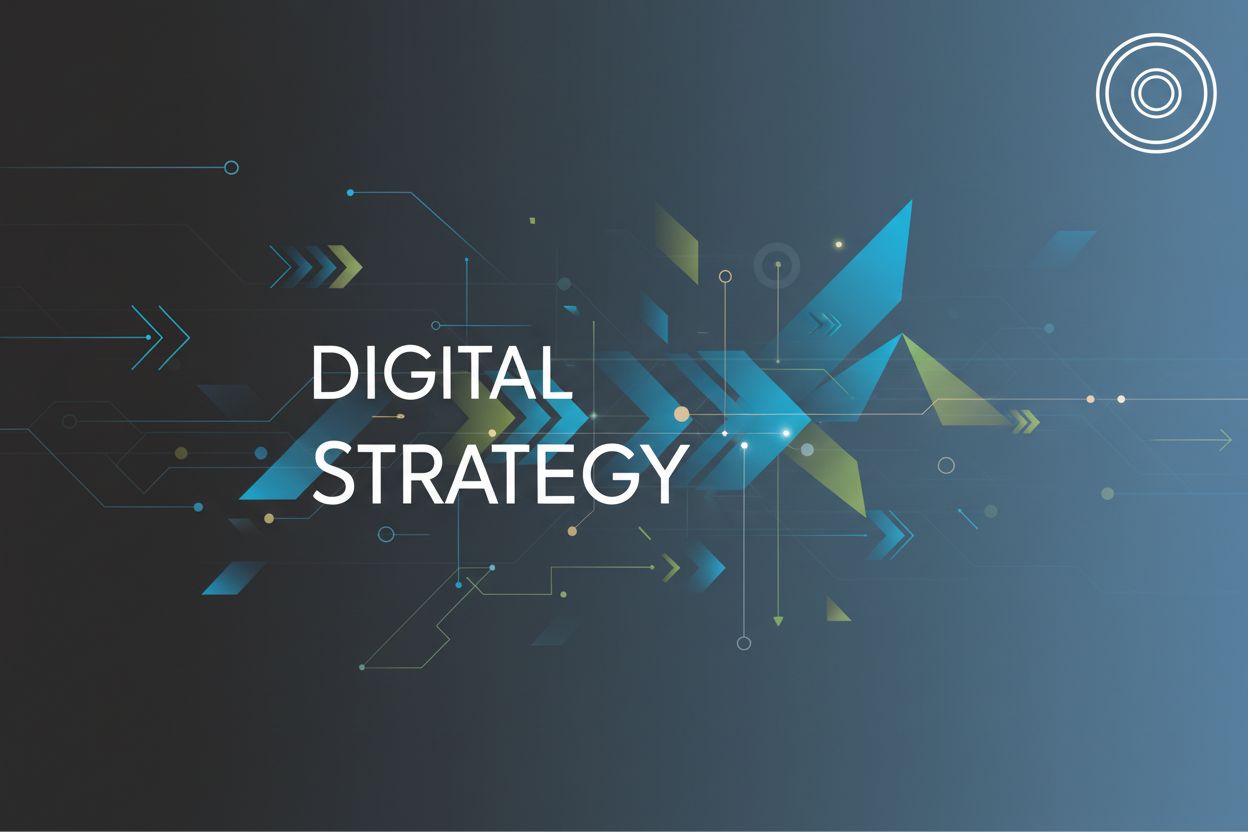10 Effective Digital Marketing Strategy Frameworks to Enhance Your Campaigns
TL;DR
Introduction: Why Frameworks Matter in Digital Marketing (and why you should care)
Okay, so why do frameworks matter in digital marketing? Honestly, it's like trying to build a house without a blueprint—total chaos, right? You could wing it, but the results? Probably not pretty.
Think of frameworks as your trusty GPS in the ever-shifting digital world, which Park University notes is evolving quickly. They help ya navigate the crazy landscape and avoid getting lost in all the latest trends and algorithm changes.
They give ya structure and a clear path, so you're not just throwing spaghetti at the wall and hoping something sticks. Plan, execute, analyze—all streamlined. you know?
Frameworks are awesome because they improve planning, enhance decision-making, and make sure resources actually go where they're needed. Plus, they provide clearer ways to measure results.
Without 'em, you're basically driving blindfolded. Now, let's dive into some of these useful frameworks.
1. The RACE Framework: Reach, Act, Convert, Engage
Okay, so the RACE framework—ever feel like your marketing's just... wandering around aimlessly? This thing could be your map. It breaks stuff down into four key stages, and it's surprisingly simple.
Reach: It's all 'bout getting your brand seen. Think SEO, social media, and ads, of course. For example, a small bakery might use local seo to get peeps through there doors.
Act: Once they're lookin' at ya, what then? Gotta make 'em do something. That's where content marketing and a slick user experience comes in.
Convert: Alright, time to turn lookers into buyers. Sales funnels, email campaigns, the whole shebang. A finance company might use targeted ads to convert interest into sales.
Engage: Don't let 'em forget about you! Build loyalty through community and personalized stuff. A healthcare app might use community building to keep users engaged.
It's a cycle, a journey, a... you get the idea?
Basically, it's how you keep folks coming back.
2. The 5A's Framework: Aware, Appeal, Ask, Act, Advocate
Okay, so the 5A's framework... sounds like a boyband, right? But it's actually a pretty cool way to think about how customers move through their journey with your brand. It's all about understanding their experience and turning 'em into raving fans.
- Aware: First, they gotta know you exist. This is where your brand awareness efforts come in, getting your name out there with some good SEO and social media.
- Appeal: Next, you gotta make 'em want you. Create content that actually speaks to them.
- Ask: Encourage peeps to ask questions; get that conversation going.
- Act: Time to turn those interested parties into actual customers!
- Advocate: And finally, get them shouting from the rooftops about how awesome you are.
It's a cycle, not just a one-way street, ya know?
3. The SOSTAC Model: Situation, Objectives, Strategy, Tactics, Action, Control
Alright, so SOSTAC... sounds like a new energy drink, right? But it's actually a framework to get your marketing act together. Seriously, though, it's pretty comprehensive.
Situation Analysis: Gotta know where you are, right? Market research, competitor analysis, all that jazz. Like, a small clothing boutique might analyze local trends and see what the other shops are pushing.
Objectives: What are you trying to do? Increase sales? Boost brand awareness? These need to be SMART - specific, measurable, achievable, relevant, and time-bound.
Strategy: How are you gonna get there? Are you gonna focus on social media, email, or maybe even carrier pigeons? (jk). For example, a healthcare provider might target their strategy towards building trust and patient education.
4. AIDA: Awareness, Interest, Desire, Action
AIDA, huh? Sounds kinda dramatic, but it's actually a super old-school marketing framework. Like, from the 1800s old! Still works, though.
- Awareness: Slap your brand name out there. Think eye-catching ads, social media blitzes... you know the drill.
- Interest: Now you gotta make 'em care. Content that educates, entertains, or solves a problem is key like American Express used guest blog posts on their OPEN Forum to establish authority.
- Desire: Show 'em why they need it. Highlight the benefits, not just features.
- Action: Make it easy to buy! Clear calls to action are a must.
5. See, Think, Do, Care
Okay, so, See, Think, Do, Care... Ever wonder how to not waste content on folks who aren't ready to buy? This framework is all about matching content to where someone is in their customer journey.
- See: Cast a wide net with stuff for brand awareness.
- Think: Give 'em info to consider if they need a solution.
- Do: Offer content that pushes conversions.
- Care: Keep existing customers happy with loyalty-building stuff.
6. The Customer Value Journey
Okay, so the Customer Value Journey... It's kinda like mapping out how to turn a stranger into a total brand fanatic, ya know? Here's the gist:
- It's all about value at every step. Don't just think about selling; think about helping. A financial advisor, for example, might start with free webinars on budgeting.
- The journey typically involves stages like Awareness, where potential customers first learn about your brand; Engagement, where they interact with your content and offerings; Subscription, where they sign up for newsletters or services; Conversion, where they make a purchase; Loyalty, where they become repeat customers; and finally, Advocacy, where they promote your brand to others. It's a whole process.
- Turning them into advocates? That's the ultimate goal.
7. The McKinsey 7S Framework
Okay, so the McKinsey 7S framework – seven things, all starting with "S," that somehow make your business tick? Sounds a little cryptic, i know. But, stick with me.
Strategy: This is your plan of attack. It's how you aim to gain a competitive edge. For example, a retail company might shift it's marketing to mobile first.
Structure: How's your team arranged? Do you have a flat hierarchy or is it more of a pyramid? A healthcare company, for instance, might restructure to better handle telehealth services.
Systems: These are the procedures, processes, and routines that get things done. Automation implementation might be a thing here, and you should consider digital process optimization.
Skills: What are the capabilities and competencies of your organization? This could involve training programs or hiring specialized talent.
Staff: Who are the people in your organization, and how are they managed? This includes recruitment, development, and motivation.
Style: What is the leadership style of the organization? Is it collaborative, authoritarian, or something else?
Shared Values: What are the core values and beliefs that guide the organization's actions? This is often the most difficult "S" to change but is fundamental to culture.
It's all about getting these seven "S" elements aligned.
8. The Innovation Diffusion Model
Ever feel like you're shouting into the void? The Innovation Diffusion Model helps you understand who's actually listening to your marketing, and when they'll tune in.
- It's all about adopter categories: innovators, early adopters, the early majority, the late majority, and laggards.
- Think of it like this: innovators are the tech-obsessed; laggards, they're, like, still faxing stuff.
Get this right, and watch your strategy improve.
9. The Customer-Based Brand Equity (CBBE) Model
So, CBBE – Customer-Based Brand Equity – sounds kinda fancy, right? But it's basically about building a brand that customers love and that has real value in their eyes.
- It's got four levels: identity, meaning, response, and relationships. Think of it like climbing a ladder to brand loyalty.
- Identity: This is about creating a strong brand image and making sure customers can identify your brand.
- Meaning: This level focuses on what your brand represents to customers – their perceptions, associations, and the benefits they derive.
- Response: This refers to how customers react to your brand, including their judgments (quality, credibility) and feelings (warmth, fun).
- Relationships: The highest level is about building a strong, loyal relationship with customers, fostering a sense of community and connection.
- CBBE is all about making sure your brand has strong equity, which leads to more loyal customers, according to Zen Media
10. The Hook Model
Alright, so, the Hook Model... ever wonder how apps get you addicted? It's all about habit forming. (Habit Formation)
- It got four phases: trigger, action, variable reward, and investment. Think notifications that pull you back in.
- Like, a social media app uses likes and comments as variable rewards, and, investments, like building your profile.
- It's super important in app design.
Conclusion: Choosing the Right Framework for Your Needs
Alright, so you've seen a bunch of frameworks, huh? It's like, "Where do I even start?" Don't sweat it, picking the right one isn't rocket science, I promise.
First off, think 'bout what you're actually trying to do, like, what are your business goals? Are you trying to grab more eyeballs, get peeps to buy, or just make 'em love your brand? A framework should fit that.
Don't just set it and forget it, though. You gotta keep an eye on things and tweak as needed. Treat it like a living thing, because things change fast, ya know?
Adaptation is key; what works today might totally flop tomorrow. It's about being flexible and not getting too attached to any one way of doing things.
Seriously, frameworks are just tools. They ain't the boss of you. If a particular framework, like the RACE Framework, the SOSTAC Model, or the Hook Model, doesn't feel right for your needs, don't hesitate to explore others.
Ultimately, it's about finding what clicks with your style and your goals. Experiment, mess up, learn, and repeat. That's how you find the magic, and that's how you make your marketing sing!







